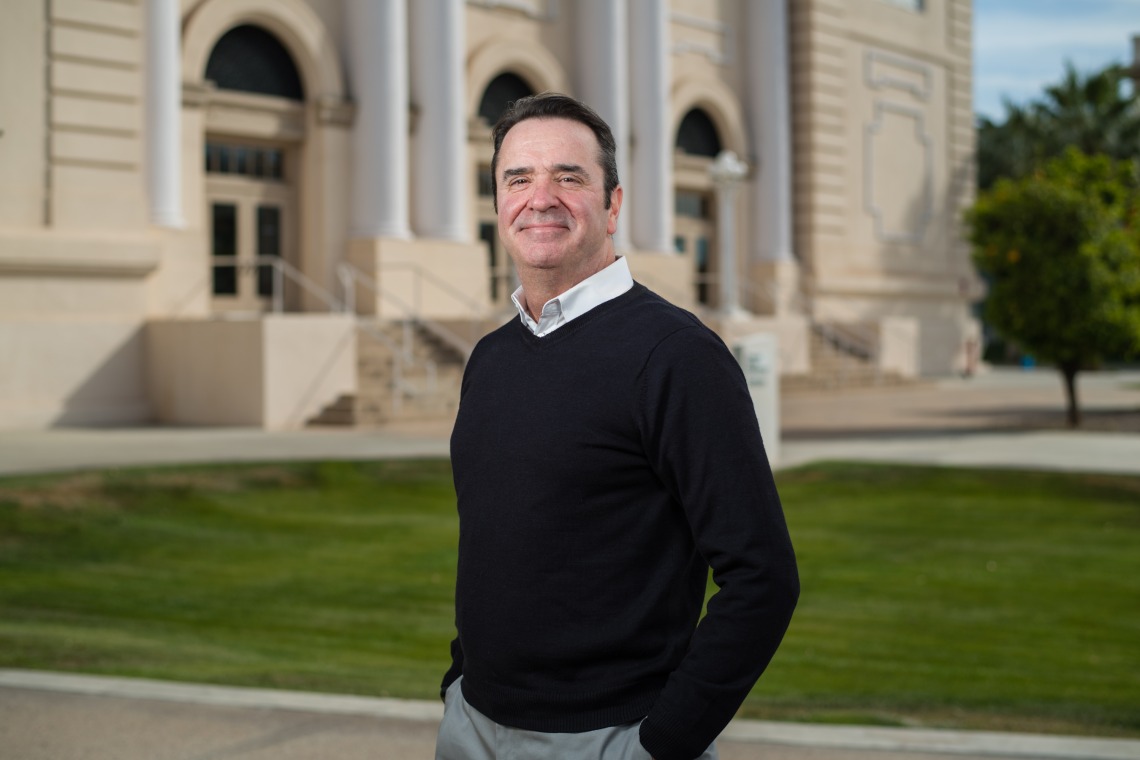UA Researcher Studies Manual Medicine as Potential First-Line Therapy

Paul Standley is associate dean and a professor of physiology and basic medical sciences at the University of Arizona College of Medicine – Phoenix.
Paul Standley, associate dean and professor at the University of Arizona College of Medicine – Phoenix, is using basic medicine to make the case that certain manual medicine techniques should be a primary line of care.
Manual medicine, often considered to be a complementary or an alternative medical approach, typically describes clinician-directed techniques to aid in the treatment of musculoskeletal and other disorders. Such treatments are widely used by osteopaths, chiropractors, physical therapists, kinesiologists and massage therapists.
"These treatments are nonsurgical, nonpharmacological and noninvasive," Standley said. "If we can conduct scientific research that shows the benefits of these treatments, then maybe one day we can make these alternative medicines a first-line therapy."
Although manual medicine has been around for thousands of years, there is little scientific evidence supporting the approach. Standley is studying how manual medicine affects gene expression, focusing on the biomechanical regulation of gene regulation and cell growth in bioengineered tendons, bioengineered fascia and skeletal muscle cells.
Standley started his career at an allopathic medical school in Michigan. He came to Arizona in 1996 to found a new medical school, which happened to be an osteopathic school. After 10 years there as an educator, researcher and department chair, he came to the UA to again found a new medical school, returning to the "allopathic world."
He became interested in his area of research years ago when he was recruited to Midwestern University's Arizona College of Osteopathic Medicine. While wandering the halls of the building, Standley came across a space directly across from his new office, where nearly 150 students and 15 faculty members with matching polo shirts were milling around a room filled with what looked like massage tables. The students were in the introductory session of osteopathic medicine. This was Standley's first exposure to manual medicine and where he became interested in how stretching, compression and other biophysical stimuli could cause or cure disease.
Standley has been at the College of Medicine – Phoenix since 2006. He was one of the founding faculty who helped build the medical school curriculum and associated policies. In addition to being associate dean of curricular affairs and program evaluation, Standley is a professor of physiology and basic medical sciences.
In November, he was the keynote speaker for the fifth annual International Fascia Research Congress in Berlin. The congress, which was formed 15 years ago, welcomes clinicians and scientists from across the world who practice manual medicine. About 1,100 attendees from more than 27 countries came to learn about how the fascia – the layer beneath the skin that attaches and separates muscles and other internal organs – can impact health outcomes.
"It's fascinating and heartwarming to see these diverse sets of clinicians who typically fight for the same patients come together from across the globe," said Standley, who also is a board member for the Fascia Research Congress and the Ida P. Rolf Research Foundation. "This is an amazing example of collegiality."
The congress was created by a multidisciplinary committee of basic science researchers and practicing health care professionals whose respective fields share a common focus and interest in the human body's soft connective tissue matrix. The hope is that they can foster collaboration among scientists and clinicians.
"This whole area of medicine, which does not rely on surgery or pharmaceuticals, has historically been called complementary and alternative medicine, and that alone meant basically that it's alternative to what we know works," Standley said. "In these 15 years of meetings, we now know that these treatments work for some patients with certain disorders such as nonspecific low back pain. Through these conferences and by fostering collaboration, we are bringing complementary and alternative medicine mainstream to be used as a first line of treatment to better care for our patients."
A version of this article originally appeared on the College of Medicine – Phoenix website.

